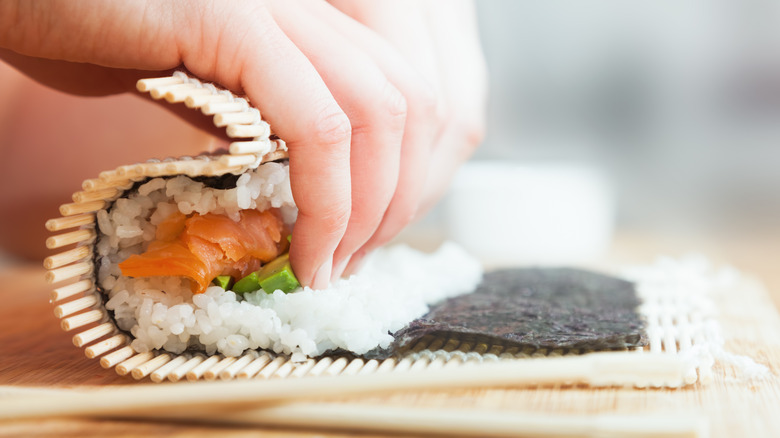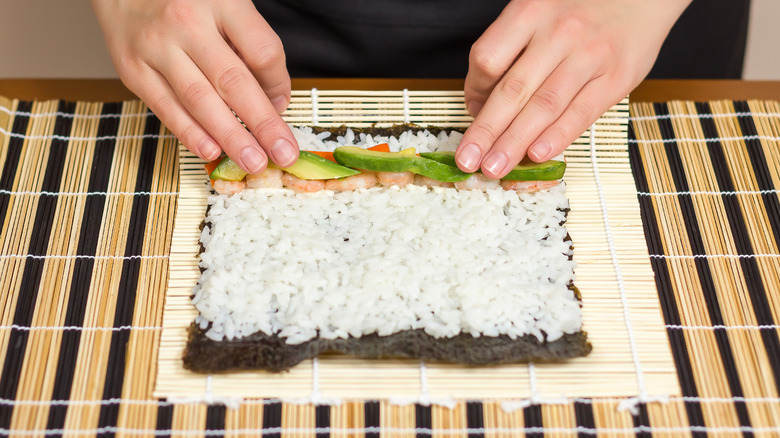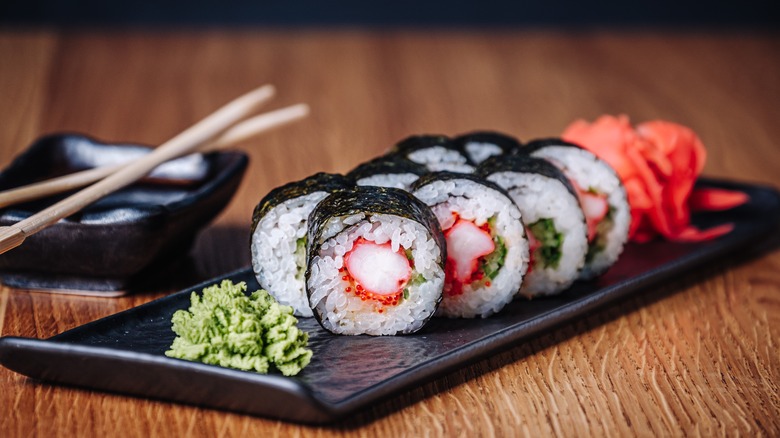What Does It Mean To Double Roll Sushi?
It's unlikely that when the first sushi was created, anyone could have expected it to become one of the world's favorite foods. As Roka Akor explains, the earliest form of sushi that would appear was a dish known as Narezushi. It was first made in China during the second century B.C. according to historical records. This dish was made using fermented fish and rice as a means of preservation and likely would've looked and tasted extremely different from today's California Rolls.
Despite this practical and humble beginning, sushi has grown to be one of the world's most popular cuisines. Shiki Sushi claims that this success is due to the presence of the fifth taste known as "umami." Sushi is a great example of this dish as the clean flavors of raw fish and rice complement the savory elements of soy sauce, wasabi, and toasted nori.
Another reason for sushi's popularity might be its simple ingredients. All it takes is fish, rice, vegetables, and seaweed to make your very own sushi at home. While the ingredients might be simple, the assembly of a sushi roll can be a challenge.
The double roll
While there are many different types of sushi, one of the most common is the sushi roll or makizushi. Not only is it one of the most tricky sushis to assemble, but it also requires specialized equipment. To keep control of the sushi while it's being rolled, it's recommended to use a bamboo mat. If you're trying your hand at rolling sushi for the first time though, The Minimalist Baker says that you can swap that out for a towel coated in plastic wrap instead. This will give you control over the sushi while it's rolled, without anything sticking to your hands.
For more sushi rolling advice, we turn to Nobu's creator and sushi chef Nobuyuki Matsuhisa, via Food & Wine. For getting the perfect roll every time he recommends a technique known as "double rolling" your nori sheet. Once you have your sheet laid out, and the rice is spread across it evenly, roll up half the nori sheet. Then, unroll it, and repeat the process on the opposite side before rolling it all together. This will help spread out all of the different elements in your sushi roll and give it a nice round shape.
Other keys to properly roll sushi
Of course, there's more to a good roll than just this technique though. Shogun Orlando says that it's also helpful not to overfill your rolls. If you add too much rice or other ingredients, it will only become more difficult to get an even-shaped final product. Food & Wine reports that Matsuhisa recommends following the "rule of five" to help determine how much rice is too much.
Shogun Orlando says that another challenge is dealing with sticky rice. As its name implies, this rice will get stuck to just about everything including your hands. This can make working with the rice difficult. So, it's best to wet your hands as you assemble the sushi roll to prevent things from getting too messy.
Secrets of Sushi also recommends using some of that water to help create a nice seal. When you put the rice onto the nori sheet, you'll need to leave some of it bare on the top and bottom. Just before you roll the sushi, you should sprinkle a tiny amount of water onto these sections of nori. This will help the nori stick together as it's rolled, and help keep your sushi fillings inside where they belong.


